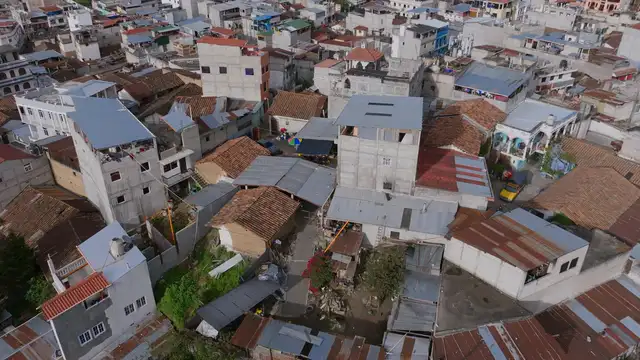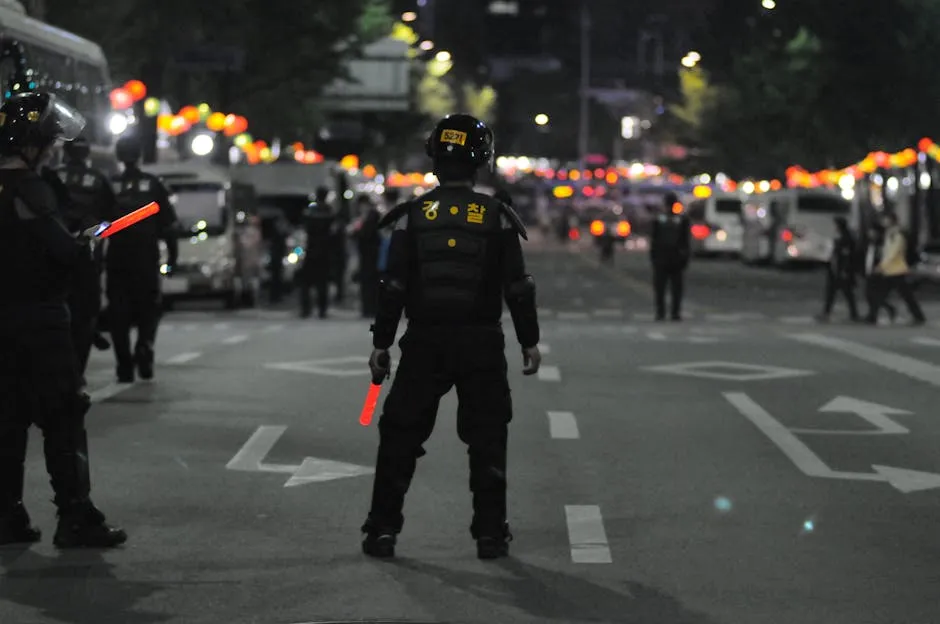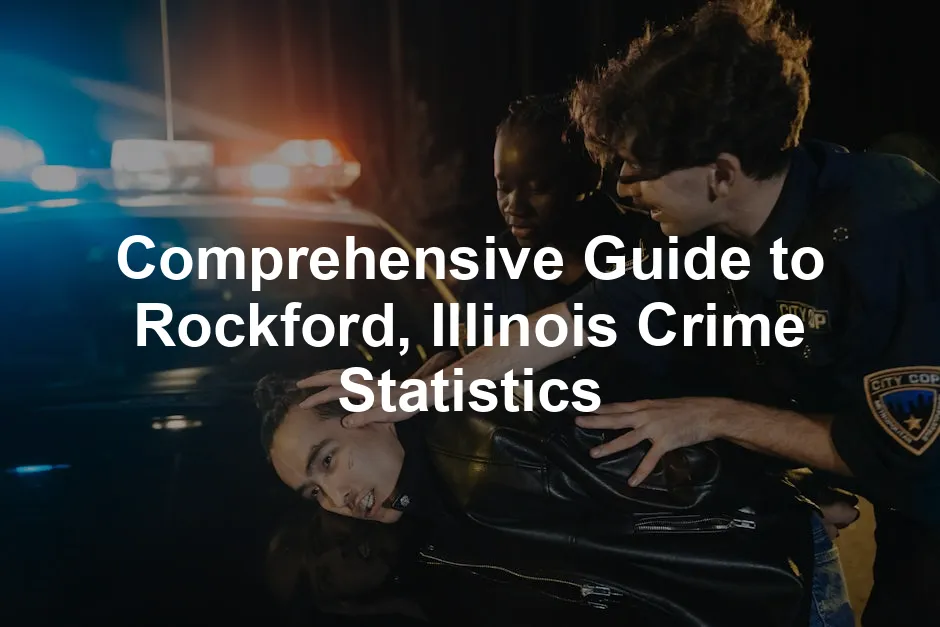Introduction
Rockford, Illinois, often dubbed as the “Forest City,” has a rich history and a vibrant culture. With its beautiful parks and thriving community, it’s a place where families and individuals can feel at home. However, like many cities, Rockford faces challenges, particularly regarding crime. Understanding crime statistics is crucial for both residents and visitors. These figures not only reveal safety concerns but also help in making informed decisions about living and visiting here.
Crime statistics serve as a mirror reflecting the safety of a community. They provide insights into the nature and frequency of crime, enabling residents to grasp the area’s safety landscape. For visitors, these statistics can inform travel choices, ensuring a safe experience while exploring the city’s attractions.
This article aims to provide a thorough analysis of crime statistics in Rockford. We will look at trends over the years, comparisons with state and national averages, and offer safety recommendations for those navigating the city. Whether you’re a lifelong resident or planning a visit, understanding these numbers is key to feeling secure in Rockford.
Understanding Rockford’s Crime Landscape
Overview of Crime Rates
Rockford’s crime rate is notably high, with an overall crime rate of 41 per 1,000 residents. This means that residents face a significant risk of crime—about 1 in 24 will become a victim within a year. Such statistics can be alarming, yet they provide essential context for anyone considering living or traveling to the area.
In contrast, the national average for crime rates hovers around 25 per 1,000 residents. This stark disparity indicates that Rockford’s residents experience crime at a rate that is significantly higher than many other places in the United States, prompting a closer examination of the specific types of crime affecting the city.

If you’re looking to delve deeper into the themes of crime and how they affect society, check out Crime and Punishment by Fyodor Dostoevsky. This classic novel explores the psychological impact of crime and morality, which can offer valuable insights into understanding crime statistics.
Types of Crimes
Violent Crimes
Violent crimes include serious offenses that threaten personal safety and well-being. In Rockford, the violent crime rate stands at 14.42 per 1,000 residents, which is considerably higher than the national average. This category encompasses several types of criminal acts:
- Murder: 18 cases, equating to a rate of 0.12 per 1,000 residents.
- Rape: 131 reported incidents, at a rate of 0.89 per 1,000.
- Robbery: 205 occurrences or 1.4 per 1,000 residents.
- Assault: A staggering 1,761 incidents, translating to 12.0 per 1,000 residents.
Recent trends show that while some violent crimes have seen fluctuations, the overall rate remains critical. For instance, the number of aggravated assaults has increased, reflecting a growing concern among residents about safety.

To understand the broader implications of crime, consider reading The New Jim Crow: Mass Incarceration in the Age of Colorblindness by Michelle Alexander. This book tackles the complexities of race and the criminal justice system, which can deepen your understanding of crime trends.
Property Crimes
Property crimes involve the unauthorized taking or damaging of someone else’s property. Rockford’s property crime rate is 26.64 per 1,000 residents, which is alarmingly high. This category includes:
- Burglary: 630 incidents, at a rate of 4.29 per 1,000 residents.
- Larceny (theft over $50): A whopping 2,507 cases, or 17.09 per 1,000 residents.
- Motor Vehicle Theft: 771 occurrences, which is 5.26 per 1,000 residents.
These statistics highlight a worrying trend in property crimes. While some areas might see a slight decrease in specific types of theft, the overall property crime rate remains a significant concern for residents. Understanding this environment is essential for anyone living in or visiting Rockford, as it emphasizes the need for vigilance and proactive safety measures.

For those interested in crime scene investigation, consider checking out Crime Scene Investigation: A Guide for Law Enforcement by Thomas J. McAndrew. This book provides valuable insights into the methodologies and technologies used to solve property crimes.
Detailed Crime Statistics Analysis
Recent Crime Trends
Rockford, Illinois, has seen fluctuating crime rates over recent years. The overall crime rate stood at 41 per 1,000 residents, significantly higher than the national average. In 2022, Rockford’s police data revealed a 3.1% increase in total crime from the previous year. However, this increase came with some silver linings.
Violent crimes, which include murder, robbery, and assault, experienced a noticeable decline of 5.1%. Particularly, aggravated assaults fell nearly 20%, showcasing a positive trend in community safety. Interestingly, property crimes, including burglary and theft, saw an increase of 8.2%. This contradiction indicates a complex situation in Rockford’s crime landscape.

The Rockford Police Department reported 20 homicides in 2023, a rise from 15 in 2022. Despite this increase, the overall trend suggests that the city is making progress in combating violent crime. The police department attributes improvements to community engagement and advanced technology in crime detection.
Interestingly, the number of shots fired in the city dropped by a significant 31%. This statistic demonstrates that while some violent incidents may still occur, the overall frequency of gun-related crimes is declining. Community programs and police initiatives play a key role in these encouraging trends.
Crime Comparison: Rockford vs. National Averages
When comparing Rockford’s crime statistics to national averages, the differences are striking. The city’s violent crime rate stands at 1,430 per 100,000 residents, which is a staggering 287% higher than the national average of 370 per 100,000. This alarming statistic places Rockford among the top 100 most dangerous cities in America.
In terms of property crime, Rockford also exceeds national averages. The property crime rate of 2,635 per 100,000 residents is 34.8% higher than the national average. This discrepancy raises significant concerns for residents and can influence their decision-making regarding safety and security.

Specific crime categories reveal even more deviations. For instance, Rockford’s murder rate is 120% higher than the state average, while the rate of aggravated assaults is 167% above national figures. Such stark differences in crime rates highlight areas requiring focused law enforcement efforts and community intervention.
Conversely, some property crime rates, such as burglary, are slightly lower than national averages, suggesting there may be pockets of safety within the urban environment. This mixed picture emphasizes the importance of understanding local trends and statistics to navigate the crime landscape effectively.
For a fascinating read on the subject of crime and justice, consider The Complete Idiot’s Guide to Understanding Crime & Crime Prevention. This book breaks down complex concepts into digestible insights, making it easier to comprehend the nuances of crime and prevention strategies.
Community Sentiment and Safety Perception
Resident Surveys
Community sentiment plays a crucial role in understanding the effectiveness of crime prevention efforts in Rockford. Recent surveys indicated that only 11% of residents felt safe walking alone at night. An overwhelming 89% expressed concerns about their safety in the city. This data highlights a significant disconnect between crime statistics and community perception.
Residents also provided feedback regarding the effectiveness of law enforcement. About 32% of respondents noted that while police presence is visible, their response times were perceived as slow. Conversely, 28% felt that law enforcement was both visible and responsive. This variation in community sentiment illustrates the need for ongoing dialogue between residents and law enforcement.

Law Enforcement Response
The Rockford Police Department has been proactive in addressing crime through innovative strategies. The introduction of ShotSpotter technology for detecting gunfire has proven effective in responding to violent incidents more quickly. Additionally, automated license plate readers and surveillance cameras enhance their ability to track criminal activity.
Police Chief Carla Redd emphasized that community engagement is vital. With ongoing recruitment efforts, the department aims to fill vacancies and improve response times. These advancements are expected to strengthen relationships with residents and enhance community safety.
While crime remains a significant concern, Rockford’s police have made strides in improving safety perceptions through strategic partnerships and community initiatives. As residents increasingly participate in safety programs, the hope is that both crime rates and community sentiment will continue to improve.
Safe Neighborhoods in Rockford
Identifying the Safer Areas
Rockford, despite its crime statistics, boasts several neighborhoods with lower crime rates. These areas provide residents with a sense of security and community. Let’s spotlight a few of these safer havens:
- Prairie Ridge: This suburban enclave is known for its friendly atmosphere and family-oriented vibe. It features well-maintained parks and schools, making it an excellent choice for families.
- Edgebrook: Nestled near the Rock River, Edgebrook combines natural beauty with a strong community spirit. Residents enjoy access to outdoor activities and local amenities, contributing to its lower crime rates.
- Springlake Estates: This neighborhood offers spacious homes and a tight-knit community feel. With its low crime statistics, it attracts families looking for a peaceful environment.
- Quail Run: Known for its picturesque landscapes and friendly neighbors, Quail Run is another safe spot. The neighborhood’s active community involvement helps deter crime.
- Bluffside Heights: With stunning views and well-kept properties, Bluffside Heights is a hidden gem in Rockford. Community events and neighborhood watch programs foster a safe environment.
These neighborhoods have several factors contributing to their safety:
- Community Engagement: Active neighborhood associations keep residents informed and involved.
- Education and Resources: Access to quality schools and community programs promotes a higher standard of living.
- Well-Maintained Infrastructure: Good lighting and regular maintenance of public spaces deter criminal activity.

For those looking to enhance their personal safety while exploring these neighborhoods, consider investing in a Personal Safety Alarm Keychain. This handy device can alert others in case of an emergency, offering an extra layer of security.
Popular Neighborhoods and Attractions
While some neighborhoods shine with safety, others attract newcomers despite higher crime rates, thanks to their cultural and recreational amenities.
- Downtown Rockford: This area is bustling with life, featuring vibrant restaurants, shops, and the beautiful Riverwalk. It’s an excellent spot for those who enjoy an urban lifestyle filled with activities.
- The Arts District: Known for its galleries and performance spaces, this district draws artists and art enthusiasts alike. Community events, such as art fairs and festivals, create a lively atmosphere.
- Loves Park: Adjacent to Rockford, this neighborhood offers a suburban feel with a mix of parks, sports facilities, and family-friendly events. Its close-knit community makes it appealing to newcomers.
- Rock Valley College: This college area attracts students and young professionals, contributing to a dynamic culture. The proximity to educational resources and events makes it a desirable location.
- Anderson Japanese Gardens: A serene escape within the city, these gardens offer a beautiful space for relaxation and reflection. This attraction draws visitors from all over, enhancing the community’s appeal.

These neighborhoods, with their unique amenities, foster a sense of belonging. They showcase Rockford’s diversity, making it a city with something for everyone. The combination of community spirit and local attractions enhances the overall quality of life, encouraging residents to enjoy their surroundings despite the challenges posed by crime statistics.
If you’re looking to improve your home’s security, consider installing a Home Security System with 1080p HD Camera. This technology can help you monitor your property and deter potential intruders.
Nearby Communities and Crime Comparisons
When considering safety, it’s essential to look beyond Rockford’s borders. Nearby communities often present lower crime rates, providing alternatives for those seeking a safer environment.
- Loves Park: Just a stone’s throw from Rockford, Loves Park boasts a significantly lower crime rate. Its family-oriented neighborhoods and community parks make it an attractive option for those looking to escape Rockford’s higher statistics.
- Cherry Valley: This charming village offers a suburban lifestyle with a strong sense of community. With crime rates lower than Rockford, it’s ideal for families and retirees alike.
- Machesney Park: Known for its recreational facilities, Machesney Park combines safety with ample green spaces. The community’s commitment to safety and family activities makes it a popular choice for many.

Comparatively, Rockford’s crime rates stand out. For instance, Loves Park’s violent crime rate is nearly half that of Rockford, illustrating a stark contrast. The reasons for these differences often stem from community engagement, economic opportunities, and local law enforcement efforts.
The economic stability in nearby communities also plays a vital role. With lower unemployment rates and better access to education, these areas tend to experience reduced crime rates. This economic factor, combined with active community participation, fosters safer environments for residents.
In conclusion, while Rockford has its challenges, nearby communities and specific neighborhoods within the city offer safer options. Understanding these factors is crucial for residents and potential newcomers, helping them make informed decisions about where to live and thrive.

For those who may be interested in understanding more about crime prevention strategies, Crime Prevention: Approaches, Practices, and Evaluations is a great resource. This book provides a comprehensive overview of crime prevention methods and their effectiveness, which can be particularly helpful for community leaders and residents alike.
Conclusion
Rockford, Illinois, presents a complex landscape of crime statistics that can be daunting. With an overall crime rate of 41 per 1,000 residents, the city faces significant challenges. One in 24 residents may become a victim of crime, highlighting the importance of understanding the city’s safety issues.
Through our analysis, we observed the violent crime rate standing at 14.42 per 1,000 residents. This rate is alarmingly higher than the national average. Property crimes also pose a concern, with a rate of 26.64 per 1,000 residents. It’s clear that Rockford has room for improvement in terms of safety and security.
Ongoing community efforts and law enforcement strategies are pivotal in addressing these crime rates. The Rockford Police Department has implemented innovative technologies, such as gunfire detection systems and automated license plate readers. These advancements, coupled with community engagement, are essential in combating crime effectively.
Moreover, community initiatives focused on youth engagement and education are vital. Programs like Rockford Promise and workforce development initiatives aim to provide opportunities for residents, which can ultimately lead to reduced crime rates. When community members are involved, they become a formidable force in crime prevention.
Residents are encouraged to stay informed about crime trends and safety measures. Knowledge is power, after all! By keeping abreast of local news, participating in community safety programs, and sharing resources, residents can contribute to a safer Rockford.
Feeling secure in your environment is crucial. While the statistics might seem daunting, positive trends are emerging, and community efforts can make a difference. Let’s work together to foster a safer Rockford for everyone. And speaking of safety, consider getting a Tactical Flashlight for emergencies. It’s a handy tool that can illuminate dark spaces and even serve as a self-defense option!
FAQs
What are the chances of becoming a victim of crime in Rockford?
In Rockford, the chances of becoming a victim of crime are notably high. The overall crime rate is 41 per 1,000 residents, translating to a 1 in 24 likelihood of being affected by crime. For violent crimes, the rate stands at 14.42 per 1,000 residents, giving residents a 1 in 69 chance of being a victim. Breaking it down further: Murder: 0.12 per 1,000 residents Rape: 0.89 per 1,000 residents Robbery: 1.4 per 1,000 residents Assault: 12 per 1,000 residents When it comes to property crimes, the rate is even higher at 26.64 per 1,000 residents, which means a 1 in 38 chance of being impacted. The breakdown includes: Burglary: 4.29 per 1,000 residents Larceny (theft over $50): 17.09 per 1,000 residents Motor Vehicle Theft: 5.26 per 1,000 residents These statistics underline the importance of vigilance and proactive measures for residents and visitors alike.
How does Rockford’s crime rate compare to other cities in Illinois?
When we compare Rockford’s crime rates to other cities in Illinois, the differences are stark. Rockford’s overall crime rate is 75% higher than the national average. Major cities in Illinois, such as Chicago and Peoria, also struggle with crime, but Rockford ranks among the most dangerous. For instance, Chicago has a violent crime rate of 943 per 100,000 residents, which is significantly lower than Rockford’s 1,430 per 100,000 residents. Similarly, property crime in Rockford is 34.8% higher than the national average, while cities like Naperville and Evanston boast much lower crime rates overall. Understanding these comparisons is crucial for residents and potential movers. It helps gauge the safety of Rockford relative to its peers, which can influence decisions about living or visiting here. Knowing the risks allows individuals to prepare and engage in community safety measures effectively.
What measures can residents take to stay safe in Rockford?
Living in Rockford can be challenging, especially with crime rates on the higher side. However, residents can take several practical steps to enhance their safety and that of their community. Here are some effective safety tips: 1. Stay Aware of Your Surroundings: Always pay attention to your environment. Avoid distractions like your phone when walking in public areas. 2. Secure Your Home: Invest in good locks, security systems, and motion sensor lights. A well-lit property is less attractive to burglars. 3. Join or Form a Neighborhood Watch: Collaborate with neighbors to keep an eye on each other’s properties. A united community can deter criminal activity. 4. Use Public Resources: Attend community safety meetings or workshops hosted by local law enforcement. These often provide valuable information on crime prevention. 5. Report Suspicious Activity: If you see something unusual, report it to the Rockford Police Department. Quick reporting can prevent crime. 6. Participate in Local Events: Engaging in community activities can help you connect with your neighbors and build a supportive network. 7. Educate Yourself: Learn about self-defense or personal safety courses available in the area. Being prepared can boost your confidence. 8. Utilize Technology: Use apps that allow you to connect with local law enforcement or community groups. Many cities have platforms for sharing safety tips and alerts. 9. Stay Informed: Follow local news and police reports to stay updated on crime trends in your area. Knowledge is power! By practicing these measures, Rockford residents can play a vital role in enhancing their safety and fostering a more secure community.
What role does the community play in reducing crime?
Communities play a pivotal role in crime reduction. In Rockford, collaborative efforts can make a significant impact. Here are some initiatives and programs that aim to prevent crime: 1. Community Policing: This approach fosters a partnership between the police and residents. Officers engage with neighborhoods, building trust and cooperation. 2. Youth Programs: Initiatives such as after-school programs and recreational activities provide alternatives to crime for young people. Engaging youth can reduce delinquency rates. 3. Neighborhood Associations: These groups often work on beautification projects and community events, promoting pride in the area, which can deter crime. 4. Crime Prevention Workshops: Local organizations frequently host workshops focusing on safety tips, self-defense, and how to recognize and report suspicious behavior. 5. Collaboration with Local Businesses: Business owners can participate in crime prevention by improving lighting, installing security cameras, and encouraging employees to be vigilant. 6. Community Events: Hosting events like block parties or clean-up days fosters connections among residents. Strong community ties can discourage criminal behavior. 7. Support Services: Programs that assist victims of crime, such as counseling and legal aid, help individuals recover and encourage reporting of crimes. 8. School Partnerships: Collaborating with schools to educate students about the consequences of crime and the importance of community can have lasting effects. By actively engaging in these initiatives, community members can create a safer environment and reduce crime rates in Rockford.
Where can I find more information about crime data in Rockford?
If you’re looking for detailed information on crime statistics in Rockford, several valuable resources are available. Here are some official websites and agencies to explore: 1. Rockford Police Department: Their website offers updated crime statistics, safety tips, and information on community programs. Visit Rockford Police Department. 2. NeighborhoodScout: This site provides comprehensive crime reports and statistics for Rockford and other cities across the U.S. Check it out at NeighborhoodScout. 3. AreaVibes: You can find a breakdown of crime rates compared to national averages, along with community reviews. Visit AreaVibes. 4. City-Data: This platform presents various statistics, including crime rates, demographics, and local trends. Explore it at City-Data. 5. FBI Crime Data: For national and state-level crime statistics, the FBI provides comprehensive reports, including Uniform Crime Reporting (UCR) data. Visit FBI Crime Data Explorer. 6. Rockford’s Community Resources: Local government websites often have links to safety programs and community policing initiatives. Check your local government portal. By utilizing these resources, residents and visitors can stay informed about crime trends and safety measures in Rockford.
Please let us know what you think about our content by leaving a comment down below!
Thank you for reading till here 🙂
All images from Pexels




